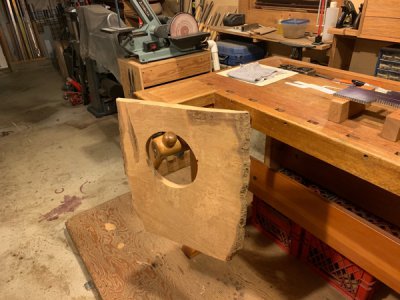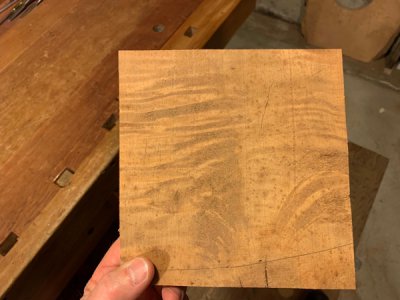- Joined
- Oct 31, 2016
- Messages
- 2,645
Welcome to the forum. Lots of friendly people on here willing to share their experiences and offer advice. Don't be afraid to ask any question no matter how simple it may seem to be.
If you don't have a copy of the owners manual here is a link to the manual. https://www.manualslib.com/manual/735970/Delta-28-195.html
What boat are you planning to build?
While this saw may not be the best for what you want to do it is what you have. I think your biggest problem will be keeping a 16' long board aligned with the saw blade. Since you will be scarfing the joints anyway you might want to consider using 8' boards. I have had problems in the past cutting long stock on my radial arm saw and on a table saw. To over come this I replaced the table on my radial arm saw with a piece 3/4" plywood 8' long. Really made a difference in being able to control the cut on long stock. You will need a fence. A 1x4 on edge should be high enough. And you will need to make something to keep the board against the fence as you make the cut. Has to be adjustable because the width of the board will change with each cut. I did a quick search and didn't find a long table for a band saw. I did find a bunch of long tables for a miter saw. You could adapt these ideas for a band saw table. https://www.guidepatterns.com/diy-miter-saw-table-plans.php
Post some picture of your setup so people can offer suggestions. Have fun with your project.
If you don't have a copy of the owners manual here is a link to the manual. https://www.manualslib.com/manual/735970/Delta-28-195.html
What boat are you planning to build?
While this saw may not be the best for what you want to do it is what you have. I think your biggest problem will be keeping a 16' long board aligned with the saw blade. Since you will be scarfing the joints anyway you might want to consider using 8' boards. I have had problems in the past cutting long stock on my radial arm saw and on a table saw. To over come this I replaced the table on my radial arm saw with a piece 3/4" plywood 8' long. Really made a difference in being able to control the cut on long stock. You will need a fence. A 1x4 on edge should be high enough. And you will need to make something to keep the board against the fence as you make the cut. Has to be adjustable because the width of the board will change with each cut. I did a quick search and didn't find a long table for a band saw. I did find a bunch of long tables for a miter saw. You could adapt these ideas for a band saw table. https://www.guidepatterns.com/diy-miter-saw-table-plans.php
Post some picture of your setup so people can offer suggestions. Have fun with your project.







 In the past
In the past Though I had to work somewhat closely with them during my career.)
Though I had to work somewhat closely with them during my career.)